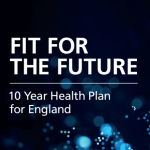Population Health Analytics
Enabling the NHS Long-Term Plan Through the ACG System
We’ve had a little time to digest the recent NHS 10-year plan and today our team shares their key takeaways for Johns Hopkins ACG® System users in England.
What are the key points of the 10-year plan?
The good news: if you are already using the Johns Hopkins ACG System, your work is central to delivering the vision outlined in ‘Fit for the Future’! Many of the plan’s core priorities — personalized and predictive care, the design of neighborhood level services and a stronger emphasis on health equity — directly align with the work ACG System users are already doing.
How are ACG System customers tackling complex health challenges using integrated data?
The ACG System pulls together structured clinical and demographic data from primary and secondary care settings to segment patients using our Patient Need Groups (PNG) tool. These insights make it easier to identify actionable health risks and ensure care isn’t fragmented. Additional insights can be overlaid to determine whether behavioral, social or clinical factors are driving risk. Insights can then inform new interventions, service or staffing reconfiguration, or improved care coordination among teams — focusing on what patients genuinely need and leading to a more preventive approach.
It’s exciting that predictive care — and underlying population health analytics — are such a key part of the NHS Plan. It’s encouraging to see how the NHS plans to focus on data-driven commissioning of care. Putting the patient at the center of the plan means that the NHS needs to really understand patients’ lives — everything from their housing and digital access to their interactions with their GP and hospital.
What does the emphasis on Neighborhood Health involve?
A key part of the 10-year vision is proactive, planned care delivered close to home. Across the NHS, ACG System customers are already making this a reality. For example, Brookside Surgery is using segmentation to enable smarter patient triage, while Kumar Medical Centre leverages segmentation tools to identify complex patients earlier and allocate resources more effectively. In both cases, a key component to success was training and empowering teams across the practice to understand segmentation as a common clinical currency.
These local successes demonstrate how population health tools can really drive system-wide change, shifting from reactive care to community-based prevention.
What does it mean to move from predicting to preventing?
The NHS is committed to a prevention-first model, driven by real-time data and predictive insights.
The ACG System has long championed this approach. Its predictive models help identify people at risk of future high-resource use, hospitalization and readmission, as well as those who are likely to become persistent high users. It supports the creation of long-term care plans for those with complex needs or multiple conditions. Additionally, the ACG System’s ED classification tool can analyze why people visited the ED in the past 12 months to determine whether use was appropriate or whether care could have been safely redirected to other, less resource-intensive community settings.
Instead of just reacting to patient needs, the ACG System’s insights help teams plan ahead, coordinating care to modify clinical workflows, prevent crises and improve patient outcomes.
What’s Next?
For ACG System users, the future outlined in the NHS 10-year plan isn’t some distant ambition — it’s already happening. The tools ACG System users have today are helping the NHS turn its ambitions into action.
To learn more about how the ACG System can support your organization, visit hopkinsacg.org or contact us at acginfo@jh.edu. If you are a current ACG System customer, please reach out to your Account Manager.
Sign up for blog alerts and other insights from the ACG System team
Follow Us








